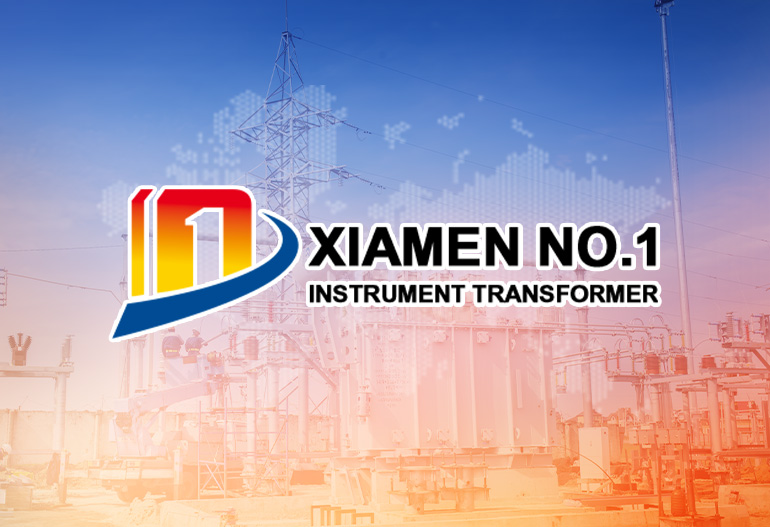Insulation Design of High-Voltage Current Transformers (110kV and Above)
Electrical Isolation: Separate the high-voltage primary winding (or primary conductor) from the grounded secondary windings and core, preventing dangerous voltage breakdown.
Dielectric Strength: Withstand normal operating voltages, temporary overvoltages (e.g., due to switching operations), and impulse voltages (e.g., lightning strikes).
Mechanical Integrity: Maintain structural stability under mechanical stresses from short-circuit forces, thermal expansion, and environmental factors (vibration, humidity, pollution).
Extreme Voltage Stresses: Operating voltages of 110kV, 220kV, 500kV, or higher create intense electric fields (kV/mm) within the insulation, increasing the risk of partial discharge (PD) and dielectric breakdown.
Impulse Voltage Exposure: Lightning strikes and switching surges generate impulse voltages (e.g., 550kV for 110kV systems, 1050kV for 220kV systems per IEC standards) that test the insulation’s ability to withstand short-duration, high-amplitude transients.
Thermal Aging: Losses in the core and windings (hysteresis, eddy currents, and ohmic losses) generate heat, raising the insulation temperature. Over time, thermal stress degrades insulation materials (e.g., oxidation of paper, hardening of resins).
Environmental Factors: Outdoor HVCTs are exposed to moisture, pollution (dust, salt, industrial contaminants), and temperature cycles, which reduce surface insulation resistance and promote tracking (conductive path formation on surfaces).
Partial Discharge (PD): Localized electrical discharges within insulation voids or at interfaces (e.g., between oil and paper) gradually erode dielectric materials, leading to eventual breakdown. PD is a primary driver of insulation aging in HVCTs.
Electric Field Distribution: Ensure uniform field strength to avoid localized stress concentrations (which cause PD and breakdown).
Voltage Withstand Capability: Meet requirements for power frequency withstand voltage (PFWV) and impulse withstand voltage (IWV).
Field Grading: Use conductive or semi-conductive materials (e.g., field grading rings, stress cones) to reshape electric fields. For example, grading rings at the ends of windings reduce field intensification at sharp edges.
Insulation Thickness Optimization: Calculate minimum thickness based on dielectric strength of materials (e.g., 2–3mm of oil-impregnated paper per 100kV). However, excessive thickness increases capacitance and may introduce voids, so finite element analysis (FEA) is used to balance thickness and field uniformity.
Multi-Layer Construction: Combine materials with complementary properties (e.g., paper and oil) to exploit the high dielectric strength of oil and the mechanical stability of paper.
Oil-Impregnated Paper (OIP): A traditional material combination where kraft paper (cellulose) is impregnated with mineral oil. OIP offers high dielectric strength (~40–60kV/mm), good thermal conductivity, and compatibility with field repair. It is widely used in 110kV–500kV CTs but requires hermetic sealing to prevent moisture ingress (which drastically reduces dielectric strength).
Resin-Impregnated Paper (RIP): Paper impregnated with epoxy or polyester resin, cured under heat and pressure. RIP is moisture-resistant, maintenance-free, and suitable for compact designs. It has a dielectric strength of ~30–50kV/mm and better mechanical strength than OIP, making it ideal for 110kV–220kV indoor or dry-type HVCTs.
SF₆ Gas: Sulfur hexafluoride, an inert gas with excellent dielectric properties (~8kV/mm at 0.3MPa), is used in gas-insulated switchgear (GIS) CTs. SF₆ provides uniform field distribution and is non-flammable, but requires gas-tight enclosures and monitoring for leaks (due to environmental concerns).
Ceramic Insulators: Porcelain or glass-ceramic insulators serve as external insulation for outdoor HVCTs, providing surface insulation against pollution and moisture. They are glazed to minimize dust accumulation and designed with sheds (flanges) to increase leakage distance (e.g., 25mm/kV for polluted areas).
Insulation Structure: The primary winding is wrapped in multiple layers of kraft paper, forming a "cylinder" around the core. The entire assembly is immersed in mineral oil within a hermetically sealed tank. The oil fills voids in the paper, enhancing dielectric strength and transferring heat to the tank walls.
Key Features:
Expandable Tanks: Compensate for oil volume changes due to temperature fluctuations (prevents tank deformation and oil leakage).
Oil Purification: Degassed and dehydrated oil (moisture <10ppm) is used to avoid PD in bubbles.
Insulation Coordination: The oil-paper combination withstands impulse voltages up to 1800kV (for 1000kV CTs) and power frequency voltages for 60 seconds (e.g., 200kV for 110kV systems).
Insulation Structure: Windings are wrapped in glass fiber reinforced plastic (GFRP) and impregnated with liquid resin, then cured under pressure to form a solid, void-free insulation block. The resin provides both electrical insulation and mechanical protection.
Key Features:
Moisture Resistance: Epoxy resins are hydrophobic, reducing the risk of surface tracking in humid environments.
Compact Design: Higher dielectric strength per unit volume allows smaller dimensions compared to oil-immersed CTs.
Flame Retardancy: Resins are formulated to be self-extinguishing, enhancing safety in indoor installations.
Insulation Structure: The primary conductor is enclosed in a metal casing filled with SF₆ at 0.3–0.5MPa. The secondary windings are isolated from the primary by the gas and supported by epoxy spacers.
Key Features:
Uniform Field Distribution: SF₆ has high dielectric strength and fills all gaps, minimizing PD.
Weather Resistance: Sealed casings protect against external pollution and moisture.
Low Maintenance: No oil or resin degradation issues, but require periodic SF₆ leak detection.
Simulation Goals:
Identify areas of high field intensity (e.g., at winding edges, conductor bends, or insulation interfaces).
Verify that maximum field strength is below the partial discharge inception voltage (PDIV) of the insulation materials (e.g., <20kV/mm for OIP).
Optimize the shape of conductors, grading rings, and insulation layers to 均匀分布电场.
Example Optimizations:
Curved Conductors: Replacing sharp corners with rounded edges reduces field concentration (field strength at a corner ∝ 1/radius).
Field Grading Rings: Metallic rings placed at the ends of windings create a smoother potential gradient, lowering field strength at winding terminations.
Insulation Taper: Tapered insulation layers (thicker at high-voltage ends) balance field distribution along the winding length.
Thermal Conductivity: Materials with high thermal conductivity (e.g., mineral oil, 0.14 W/m·K; epoxy resin, 0.2–0.5 W/m·K) are chosen to transfer heat away from hotspots.
Cooling Paths: Oil-immersed CTs use convection currents to circulate oil, while dry-type CTs may include fins or heat sinks to increase surface area for air cooling.
Temperature Class Ratings: Insulation systems are rated for maximum operating temperatures (e.g., Class A: 105°C, Class F: 155°C) based on material thermal stability. For 110kV+ CTs, Class A or higher is standard to ensure longevity.
Power Frequency Withstand Test: The CT is subjected to 1.5–2 times the rated voltage (AC) for 60 seconds to verify insulation integrity under sustained overvoltage.
Impulse Withstand Test: A lightning impulse (1.2/50μs waveform) or switching impulse (250/2500μs waveform) is applied to simulate transient overvoltages. For example, a 220kV CT must withstand a 1050kV lightning impulse.
Partial Discharge Test: Measures PD magnitude under rated voltage (e.g., <10pC for 110kV CTs) to ensure no significant voids or defects in the insulation.
Thermal Aging Test: Accelerated aging tests (e.g., heating at 130°C for 1000 hours) simulate long-term thermal stress, evaluating changes in dielectric strength and PD behavior.
Water Immersion Test: For outdoor CTs, testing insulation resistance after water immersion ensures surface insulation withstands moisture.
Nanocomposite Insulation: Adding nanoparticles (e.g., SiO₂, Al₂O₃) to epoxy or oil improves dielectric strength and thermal conductivity. Nanocomposites can reduce PD and extend insulation life by 20–30%.
Condition Monitoring Integration: Embedding sensors (e.g., PD sensors, fiber optic temperature sensors) within the insulation allows real-time monitoring of degradation, enabling predictive maintenance.
Sustainable Materials: Replacing mineral oil with biodegradable esters (e.g., vegetable-based oils) reduces environmental impact while maintaining dielectric performance.
Digital Twin Modeling: Virtual replicas of HVCT insulation systems, coupled with real-time sensor data, simulate aging and predict failure, optimizing design and maintenance.



